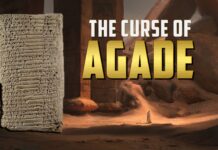By THE EDITORS on April 25, 2018
On February 18, 2017, more than 200 members of five Native American tribes gathered at a secret location on the Columbia Plateau in Washington State to return the remains of the Ancient One to the earth. The homecoming was two decades in the making for the roughly 9,000-year-old skeleton, also known as Kennewick Man, which was discovered in 1996. It had been delayed by a bitter dispute between scientists who wanted to study him and tribes who claimed he was their ancestor and wanted to rebury him, in keeping with their religious customs.
The battle raged for as long as it did in part because it was not clear whether the federal law governing the return of Native American remains to tribes that can demonstrate a cultural connection to them applied to remains as old as the Ancient One. The law defines Native American as “of, or relating to, a tribe, people, or culture that is indigenous to the United States.” In 2004 scientists who had sued to prevent repatriation of Kennewick Man won their case because a judge deemed the skeleton too old to be considered Native American. Ever since then, tribes and anthropologists have called for the law’s definition of Native American to be amended to include previously existing indigenous groups, along with current ones. Ongoing discoveries of bones, artifacts and DNA from deep time add new urgency to this imperative.
For centuries white explorers and settlers in the Americas dug up the graves of indigenous people, looting sacred artifacts and using the remains for studies that promoted white superiority. The Native American Graves Protection and Repatriation Act (NAGPRA) was passed in 1990 to enable tribes to protect and recover their heritage, and it has succeeded in reuniting many items from federally funded institutions with their rightful custodians. But when remains cannot be culturally linked to a modern tribe—or no tribe claims them—scientists may conduct research without getting approval from tribes to do so.
Yet advances in DNA technology mean that remains once thought to be “culturally unidentifiable” will increasingly be linked to modern groups through genetics, as ultimately happened in the case of the Ancient One, whose DNA revealed a close genetic affiliation to one of the five claimant tribes. And although genetic ties alone do not determine affiliation, they are a strong line of evidence. NAGPRA must be updated to reflect this technological reality by clarifying that it applies to ancient remains.
Simply following the letter of the law is not good enough, however. Just a few days after the reburial of the Ancient One, researchers announced results of genetic analysis of bones from New Mexico’s Chaco Canyon. The bones are housed at the American Museum of Natural History in New York City. The DNA results suggested that a maternal “dynasty” ruled at Chaco for hundreds of years and gave rise to the matrilineal organization of modern Pueblo groups. But as Scientific American reported at the time, the museum’s scientists did not consult modern tribes before extracting DNA from the remains because the museum deemed the bones impossible to link to any specific group. They should have invited input from tribes, both out of respect for their overarching concerns about ancestors and because collaboration might have enriched the study—through the addition of tribal knowledge about kinship systems, for example, or through comparative DNA samples from any modern tribes interested in providing them.
Scientists have a moral obligation to seek out those who might have a connection to the remains of the dead and let them decide their fate. They might not always like the decision—tribes may decide to prevent or restrict study of the remains—but they have more to gain than to lose from such cooperation. In January researchers reported the recovery of DNA from bones of an infant girl who had been buried in Upward Sun River, Alaska, some 11,500 years ago. Before studying her remains, the team obtained approval for DNA sequencing from the Athabascans who live at Upward Sun River today and asked them what questions they had about the find. That partnership led to the revelation that the skeleton represented a previously unknown branch of Native Americans and that the site contains the oldest evidence of salmon fishing in the Americas—an important tradition to Athabascans.
Related Video:
Giving Native peoples a voice in the study of their heritage is the only way to heal the wounds of the past—and build the trust needed to move forward together with scientists toward a fuller understanding of the human story.























